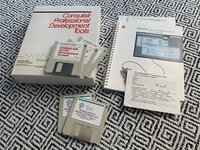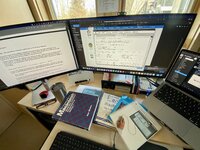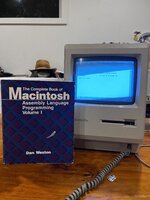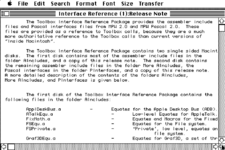I just did a comparison between 2.0 and 2.1 with ResCompare and diff and found very few changes:
The only program that is changed is
Edit. 7 CODE resources are different, most being around 100 bytes longer. The DITL resource for the About box says version 2.1. Finally, the STRG resource is different. STRG appears to be a packed string resource that contains the menu items in the app. (the actual MENU resource only contains the Transfer menu) However, looking inside the app I couldn't see any difference in the menus between the versions. All other programs are the same.
QuickEqu.D and
QuickEqu.TXT have the "QuickDraw private global variables" section changed from defining every private variable by memory location to being defined relative to one another. For example
Code:
wideData EQU $FFFFFF76 ; Fake Region
rgnBuf EQU $FFFFFF6C ; PointsHandle
is changed to
Code:
wideData EQU wideMaster-10 ;Fake Region
rgnBuf EQU wideData-4 ;PointsHandle
TimeEqu.D and
TimeEqu.TXT have one line changed
Code:
NTicks EQU 780 ; 780 ticks per msec
is changed to
Code:
NTicks EQU 783 ; 783 ticks per msec
Lastly, Nub programs are removed. MacIIBug1MB MacIIBug2MB MacIIBug5MB MacIIBug8MB are added. That's the only evidence of Mac II support.
@Crutch any chance you could scan the v2.0 supplement? I found the original user guide on archive.org
https://archive.org/details/macintosh-68k-dev but haven't been able to find the supplement yet.






